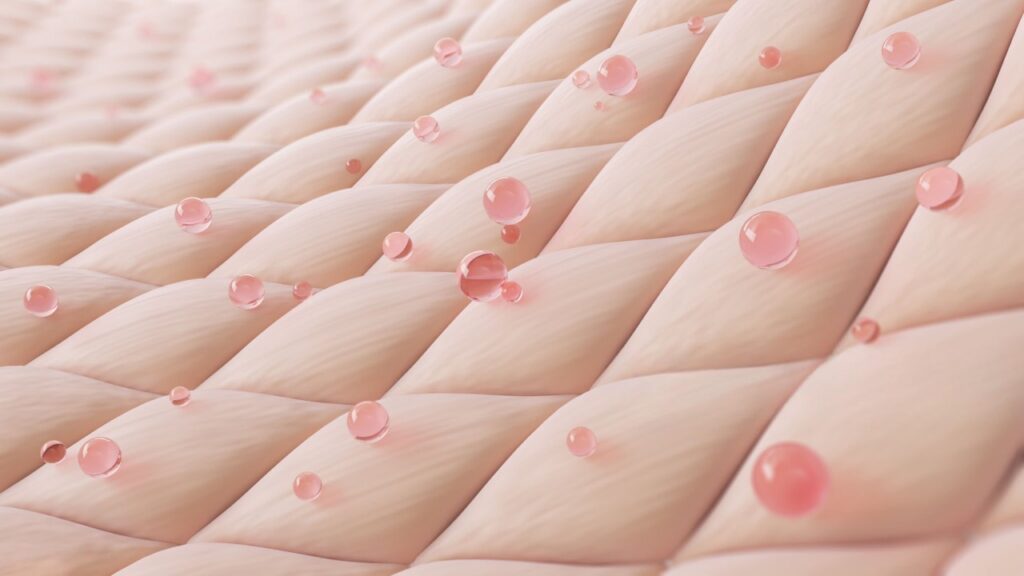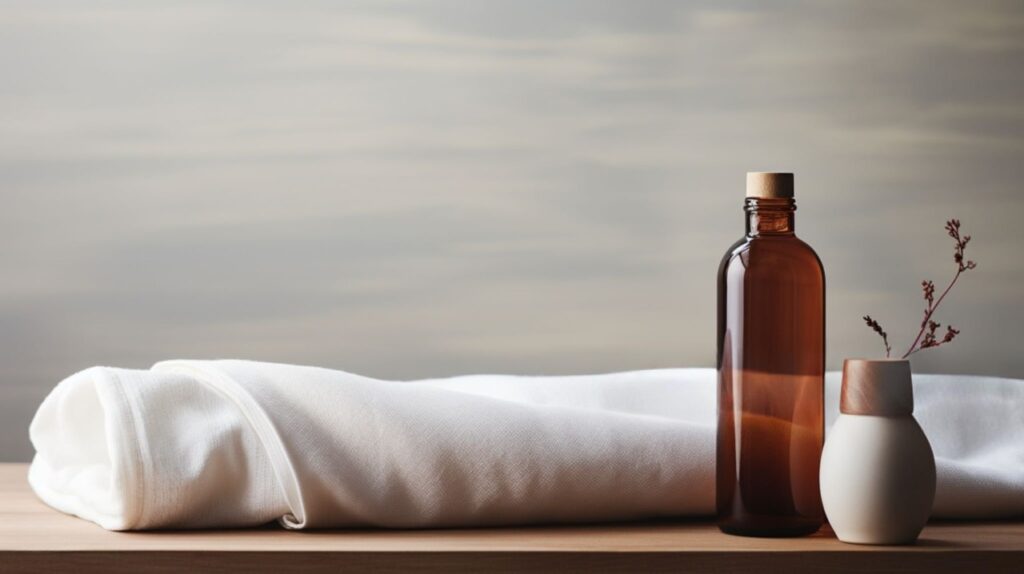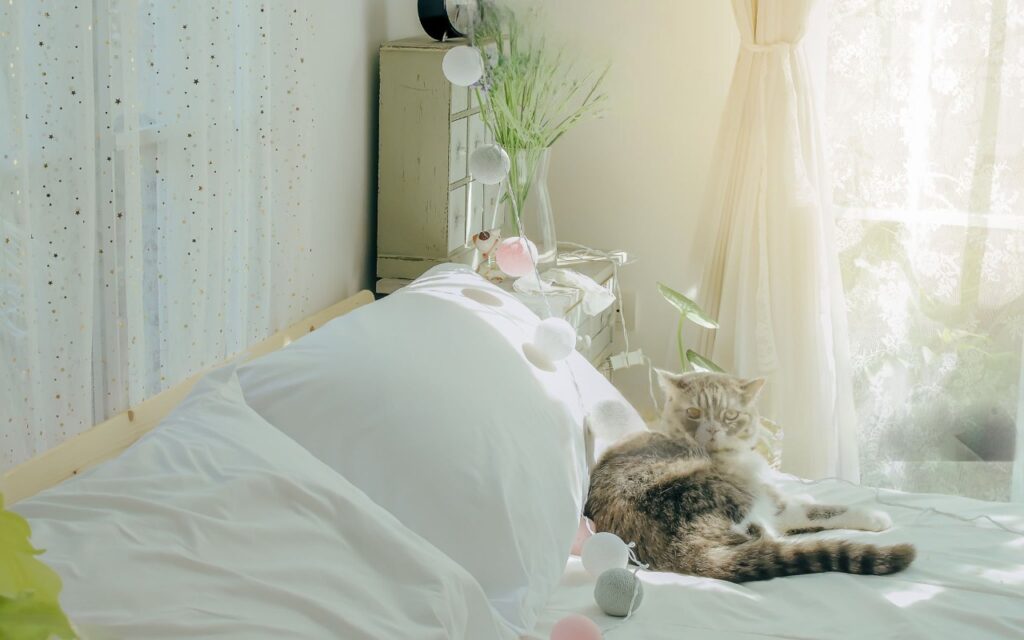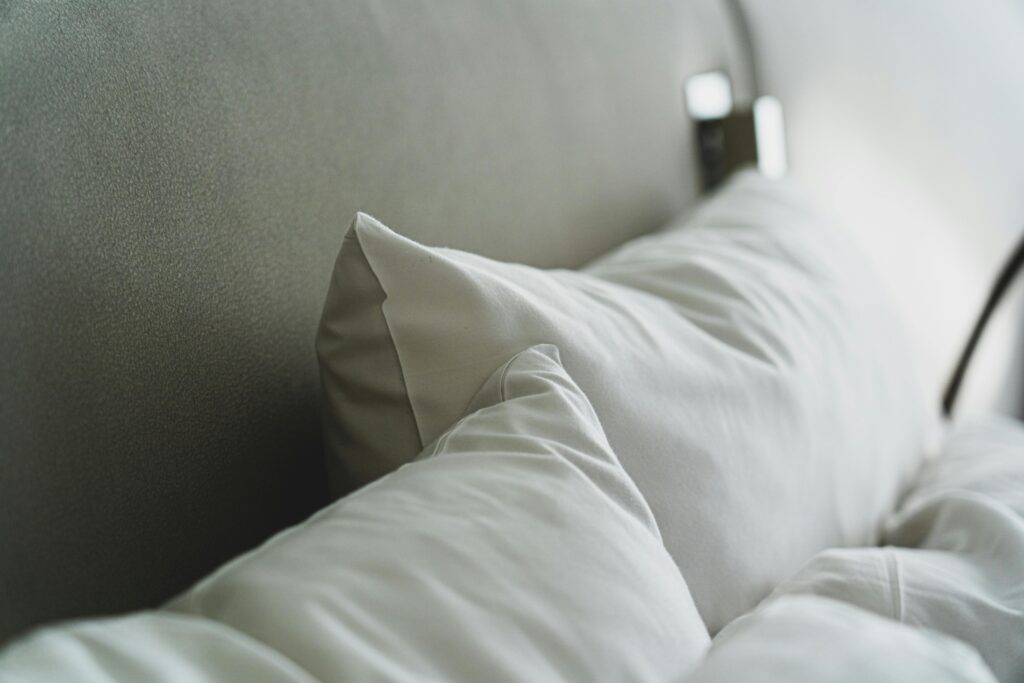
How Often Should You Wash Bed Sheets? A microbiologist reveals the stunning ecosystem thriving in your bed and the life-changing reasons why the one-week rule is more than just an old wives’ tale. Discover the personal factors that dictate your perfect washing schedule.
The question found me at 2:37 AM, during one of those wide-awake wrestles with a mind that refused to switch off. It wasn’t a profound existential query that plagued me, but something far more mundane, and somehow, more intimate. I was buried in the comforting embrace of my bed, my face pressed against the cotton pillowcase, when it hit me: This smells… lived-in.
It wasn’t a foul odor, not yet. It was a subtle cocktail of my own self: the ghost of last night’s lavender shampoo, the faint, sweet scent of my skin, and something else. Something musky and organic. It was the smell of me, of time, of accumulation. And in the blue-hued darkness, a simple, almost silly question began to echo: How often am I actually supposed to wash these?
I’d heard the old standby—once a week. It’s what my mother had done, a ritual every Sunday afternoon, stripping the beds so the house smelled of fresh laundry and promise for the week ahead. But was that a hard rule, or just a tradition? Was I a slob for sometimes letting it slide to two weeks? A neurotic clean-freak if I did it more often?
The question burrowed into my brain, a tiny itch I couldn’t scratch. So, I did what any modern person does with an unanswerable question: I fell down an internet rabbit hole. The answers were a mess of conflicting advice, listicles, and homemaking blogs with a suspicious number of ads for detergent. I needed an authority. I needed to go to the source.
That’s how I found myself, a week later, sitting across from Dr. Aris Thorne in a sun-drenched university office that smelled faintly of coffee and antiseptic. Dr. Thorne is a microbiologist, a man who has dedicated his life to the invisible universe that shares our world, and as I would soon learn, our beds. His walls were lined with books and Petri dishes containing delicate, colorful blooms of bacteria and fungi. I felt a sudden, acute awareness of every single microbe I had brought in with me.
“So,” he said, a warm smile crinkling the corners of his eyes. “You’re here about the ecosystem in your bed.”
I laughed, a little nervously. “I’m here because I’m worried I’m sleeping in a petri dish.”
“You are,” he said matter-of-factly, his smile not fading. “But so is everyone else. The question isn’t about eradication. It’s about management. It’s about diplomacy with a few trillion roommates.”
He leaned forward, clasping his hands on his desk. “Forget the arbitrary rules for a moment. To answer your question, you need to understand what’s actually happening between those sheets. Let me tell you a story.”
Water Proof Mattress Cover
The Nightly Festival of You

“Every night,” Dr. Thorne began, his voice taking on the tone of a master storyteller, “you climb into bed and you perform a miracle of shedding. You are a constant, silent blizzard of skin cells. We all shed about 500 million cells every day, and a significant portion of that happens while we’re sleeping. We toss, we turn, we rub against the sheets. It’s a snowfall of you.”
I shifted in my seat, suddenly imagining my flannel sheets covered in a fine dust of my own epidermis.
“Now,” he continued, “if those were just skin cells, it would be a simple dust problem. But they’re not. They’re a feast. A grand banquet laid out for a very specific group of guests: Dermatophagoides.”
He paused, letting the Latin hang in the air.
“Dust mites.” He gestured to a microscope on a nearby counter. “Microscopic arachnids that have evolved to live with us. They are our permanent, unseen bedfellows. And they are utterly mad for our shed skin. It’s their sole food source. A single gram of dust—which is easily accumulated in a mattress or bedding—can contain thousands of dust mites and hundreds of thousands of their fecal pellets.”
I must have made a face, because he chuckled.
“I know, it sounds monstrous. But for most people, they’re harmless. Their bodies and their feces are just another part of the environmental dust we breathe. The problem is for the millions of people who are allergic. Their immune system identifies a specific protein in the mite droppings as a dangerous invader. Cue the sneezing, the itchy eyes, the asthma attacks. For them, the bedroom is a battlefield.”
He painted a vivid picture of this nightly festival. The skin cells fall. The mites feast and multiply. Their waste accumulates. And we, the generous hosts, breathe it all in, night after night.
“But that’s not all,” Dr. Thorne said, his eyes twinkling. He was just getting warmed up. “The second act of our nightly performance is moisture. The average person sweats up to a liter of fluid every night. That’s not even counting the oils.”
He explained how our skin secretes sebum, a wonderful, waxy oil that keeps our skin waterproof and supple. At night, this oil transfers directly onto our pillowcases and sheets. Then there’s saliva, for the droolers among us. And if you sleep in anything besides your birthday suit, you’re also introducing the dirt and bacteria from the outside world that’s accumulated on your pajamas or underwear.
“So, let’s take stock of our ecosystem,” he said, ticking off points on his fingers. “We have a warm, dark environment. We have a constant food source. We have ample moisture. What does that sound like to you?”
“A… paradise?” I ventured.
Luxury Bed Spread 3 Pcs

“Precisely! It’s not just a paradise for dust mites. It’s a five-star resort for bacteria and fungi, too. We’ve found a stunning array of microbial life in bedding. Staphylococcus species, which are common on our skin. E. coli, if there’s fecal contamination from improper hygiene—and there almost always is, to some minute degree. Ringworm fungi, which can cause athlete’s foot and jock itch. Malassezia, a yeast that loves oily environments and is linked to dandruff and seborrheic dermatitis.”
He let this grim portrait sink in. My bed, my sanctuary, was a thriving metropolis of microscopic life, all funded and catered by my own body.
“The goal of washing your sheets,” Dr. Thorne said, bringing me back from the brink of panic, “is not to create a sterile environment. That’s impossible. The goal is to manage the population. You’re evicting the tenants before they throw a massive party and trash the place. You’re resetting the ecosystem back to a baseline level that your body can healthily coexist with.”
So, The Golden Rule: One Week
“This brings us to your original question,” he said. “Given everything I’ve just described, the general gold standard, the recommendation of most microbiologists and allergists, is once a week.”
A week. My mother was right all along.
“A seven-day cycle is the sweet spot,” he explained. “It’s frequent enough to prevent a significant buildup of skin cells, mite allergens, and bacterial loads to a point where they can start to cause problems for most healthy individuals. It breaks the reproductive cycle of the mites and doesn’t allow bacterial colonies to establish a strong, pungent foothold.”
He described it as a tide. Let it go too long, and the high tide of microbes leaves behind a flotsam of waste and allergens that’s harder to clean away. A weekly wash keeps the tide lapping gently at the shore.
The Exceptions to the Rule: Your Life Dictates Your Timeline
“But,” he said, holding up a finger, “a scientist deals in data, not dogma. The ‘once a week’ rule is a brilliant starting point, but your individual circumstances will dictate the rhythm. You must become the scientist of your own sleep. Ask yourself these questions.”
He then walked me through the variables that should shorten that one-week timeline.
Premium Microfiber Printed Fitted Sheet
1. The Allergic and the Asthmatic:
“If you have allergies or asthma, you are living in a state of heightened immune alert. Those mite feces are literal poison darts to your system. For you, washing your sheets every three to four days is not overkill; it’s medicine. You should also wash them in hot water—at least 130°F (55°C)—to actually kill the mites, not just wash their waste away.”
Luxury Brown Microfiber Bed Spread 7 Pieces
2. The Nocturnal Furnace (The Sweaty Sleeper):
“Do you wake up damp? Do you live in a hot, humid climate without air conditioning? Moisture is the engine of microbial growth. All that sweat is creating a tropical rainforest in your bed, a perfect breeding ground for bacteria and mildew. If you’re a heavy sweater, you should also aim for every three to four days.”
3. The Sleeping Naked Question:
“There’s a common myth that sleeping naked dirties sheets faster. The opposite is true,” he said. “Pajamas act like a sponge, absorbing a lot of your sweat and oils throughout the day and night. When you sleep naked, your sheets absorb it directly. So, while you might feel more exposed, you’re actually creating a more direct path for moisture and oils to your bedding. It doesn’t mean you shouldn’t do it—it’s very healthy for skin and intimacy—it just means you should be vigilant about that weekly wash.”
4. The Pet Factor:
“You let your dog or cat sleep on the bed? Then you’re not just dealing with your ecosystem. You’re dealing with theirs. Pet dander, pollen from outside, dirt from their paws, and their own unique microbiomes are all being added to the mix. If a pet shares your bed, you absolutely must stick to that weekly wash, no exceptions. Maybe even more frequently during shedding season.”

5. The Sickbed:
“This is a big one. When you’re ill—especially with a cold, the flu, or a stomach bug—you are a factory of pathogens. Every cough, every sweaty fever dream, every labored breath is seeding your bedding with viruses and bacteria. The moment you start to feel better, those sheets need to come off and be washed immediately. Don’t wait for the weekly cycle. You need to evict those germs before they can re-infect you or jump to your partner.”
Botanical Graphite Poly Cotton – FD Bedsheet Set
6. The Food Crumbs and The Midnight Snack:
“Do you ever eat in bed? A stray crumb is not just a crumb. It’s a gourmet meal for molds and bacteria. If your bed doubles as a dining room, you need to be extra diligent.”
7. The Shared Bed Dilemma:
“Two people means double the skin cells, double the oils, double the sweat. The microbial load doesn’t just double; it can increase exponentially as your personal biomes mingle and create new communities. A shared bed is a megacity. It needs strong governance—a strict weekly wash.”
He finished his list and looked at me. “So, you see, the answer is both simple and complex. One week is the baseline. But you must listen to your own life. Does your nose wrinkle when you get into bed? Does your skin feel itchy? Do you wake up with a stuffy nose that clears after you’ve been up for an hour? Your body will give you signals. Learn to read them.”
The Art of the Wash: It’s Not Just About Frequency
“And washing them properly is just as important as how often you do it,” Dr. Thorne added. “Throwing them in with a splash of detergent on a quick cycle isn’t enough.”
He gave me his microbiologist’s guide to the perfect sheet wash:
- Temperature is Your Weapon: “For whites and colorfast sheets, use the hot cycle (130°F/55°C or above) to kill dust mites and most bacteria. For delicate fabrics, a warm wash is sufficient for removal, if not annihilation. The dryer is your second line of defense—tumble drying on a medium or high heat for at least 15 minutes will also kill mites.”
- Don’t Cram the Drum: “Overloading the washing machine means the water and detergent can’t circulate properly. The agitation is what physically scrubs the microbes and allergens away. Give them room to move.”
- The Right Detergent: “Any good-quality detergent will work. You don’t need antibacterial additives. The physical action of washing and the surfactants in the detergent are what lift the oils and microbes away and send them down the drain.”
- The Forgotten Elements: “Your pillows and mattress need love, too. Wash your pillows every three to six months (check the label!). Use a mattress protector and wash that every one to two months. Vacuum your mattress surface every time you change your sheets to suck up the dry debris.”

I left Dr. Thorne’s office that day feeling oddly empowered. My bed was no longer just a bed; it was a complex, living system. And I was its keeper.
That evening, I went home and did something I hadn’t done on a Wednesday before: I stripped the bed. As I gathered the sheets, I didn’t just see rumpled fabric. I saw the invisible history of the last ten days. I saw the skin I had shed, the dreams I had sweated through, the quiet, microscopic life that had flourished in my absence.
I washed them on hot. I didn’t cram them in with the towels. I took my time. When I made the bed again hours later with the warm, clean sheets, the smell that hit me was no longer the musky, lived-in scent of accumulation. It was the smell of nothing. It was the smell of clean cotton, of potential, of a fresh start.
Royal Linen Micro Cotton Stripes King size Fitted sheets with 2 Pillows

I climbed into bed that night and took a deep breath. It didn’t smell like me. Not yet. And for the first time, I understood that was a good thing. It was a blank slate. A managed ecosystem. A weekly renewal of the pact between myself and the trillion invisible beings I share my life with.
The answer, it turns out, wasn’t just a number. It was a rhythm. A story of shedding and renewal, written in skin and water and heat, one week at a time. And now, I finally knew how to read it.
Premium Microfiber Printed Fitted Sheet
FAQs
1. Is it really that bad if I wash my sheets every two weeks?
While not a crisis for a healthy person sleeping alone, stretching to two weeks allows for a significant buildup of skin cells, dust mites, and microbial life. This can lead to body acne, allergic reactions, and a noticeable “sleep smell.” The one-week rule is strongly recommended to maintain a healthy, fresh sleeping environment.
2. Does sleeping naked mean I have to wash my sheets more often?
It actually means you should be more diligent about the weekly wash. While pajamas absorb a lot of your sweat and oils, sleeping naked transfers them directly to your sheets. It’s a healthy habit, but it makes that weekly reset non-negotiable to prevent a buildup of oils and bacteria.
3. What's the single most important tip for washing sheets effectively?
Use hot water (130°F/55°C) for your cotton sheets, if the fabric allows it. Hot water is essential for killing dust mites and effectively breaking down and removing the body oils and sweat that create the perfect environment for bacteria and fungi. Always check the care label first.



